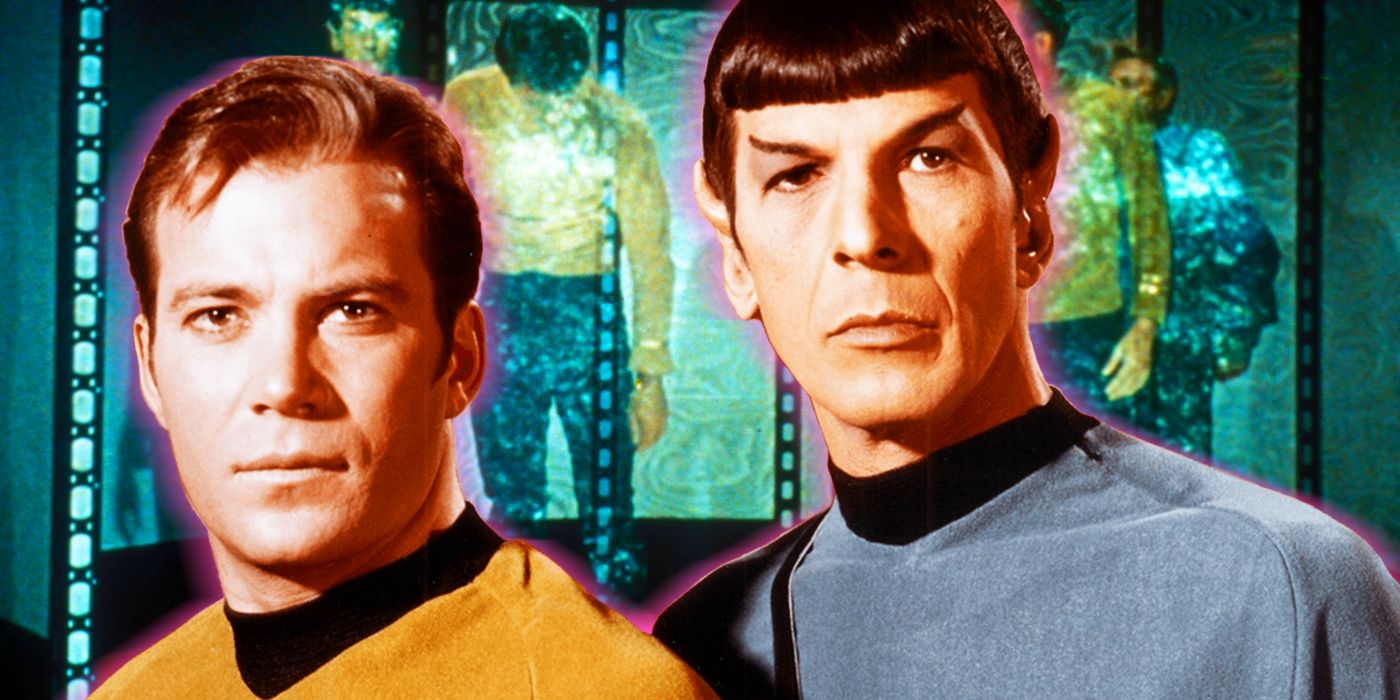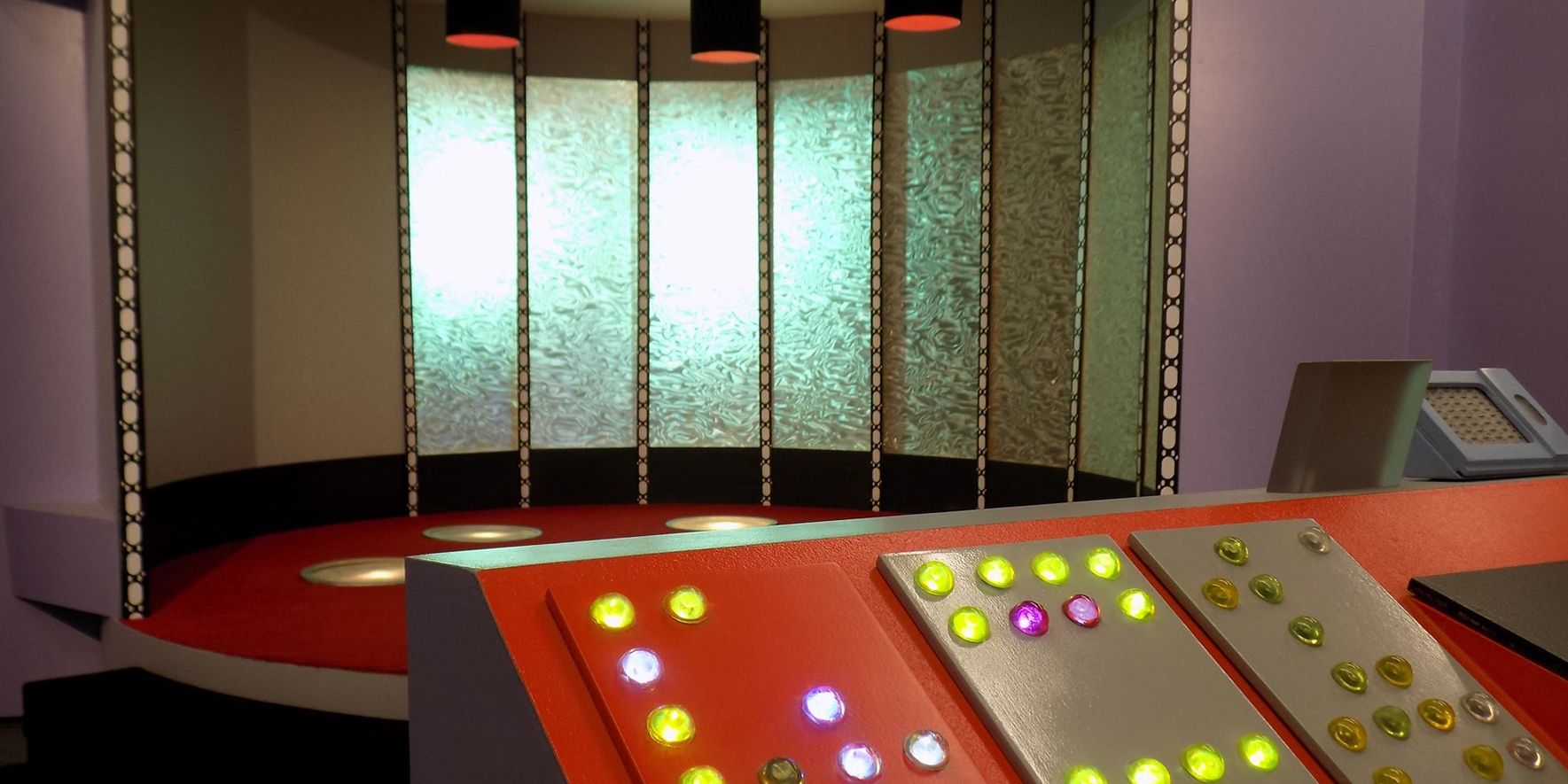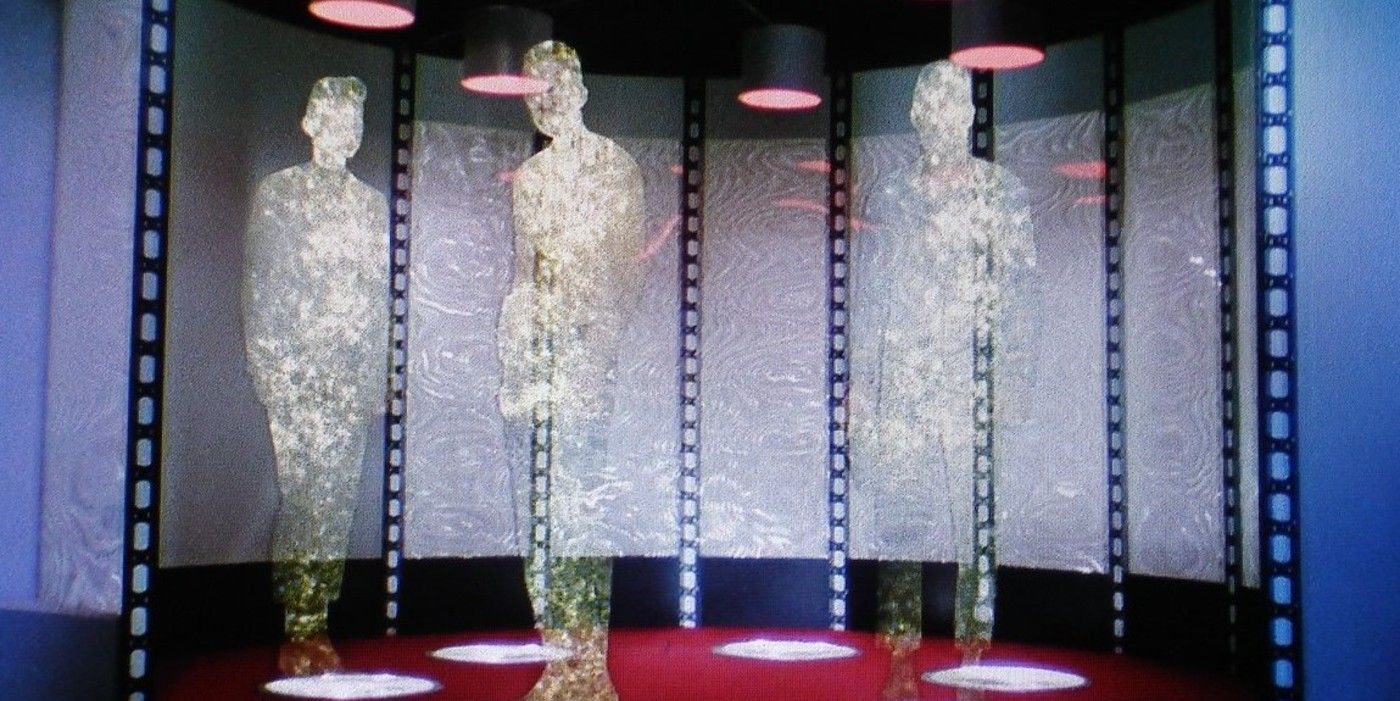The 1960s Star Trek was revolutionary in many ways. Though it really hit its stride when it reached syndication, it ended up shaping a genre and spawning decades' worth of film and television spinoffs in the same universe. However, the original series often had to work around budget constraints and fake space-age technology with 1960s special effects, which led to a lot of aliens acted by people in rubber suits and model ships flown in front of blue screens. But this often hilariously low budget also led to the most iconic Star Trek technology: the transporter.
According to the Star Trek Encyclopedia, the original series' production staff came up with the transporter as a way to get crewmen from the ship to the planet quickly. Without such a contrivance, the show would have had to show a large ship or shuttles landing every week, neither of which fit in the production budget. The original draft of the series outline, Star Trek is..., featured shuttlecraft landings and occasional descents of the ship, but a revision of that document, featured in The Making of Star Trek, had the first mention of the transporter.
This document proposed the inclusion of an unnamed "energy-matter scrambler which can 'materialize' [landing parties] onto the planet surface." The limitations of the technology — namely the fact that using the transporter used a "tremendous" amount of power and could only be done over a short, line-of-sight distance — were also mentioned in the draft.
Other early scripts gave different physical descriptions of the transporter. In the script for the first pilot episode, "The Cage," referred to the transporter as a room-sized device that "could be an artist's nightmare-conception of a futuristic x-ray machine" and a "glassed-in transporter chamber." The script for "What Are Little Girls Made Of?" described the transporter as an "energy matter scrambler," just like the revision of the series outline. But behind-the-scenes researcher Kellam de Forest suggested they refer to the transporter as an "energy matter converter" instead, explaining, "'Scramble' implies that objects are mixed in an unorganized fashion. The transporter converts the matter of the body into energy."
The episode "The Man Trap" featured what became the standard portrayal of the transporter, which led to that episode being the first to be broadcast. Executive Herb Solow later told writer George Clayton Johnson that the episode set up the transporter's function and importance, saying, "He told me, 'By going with yours, we were able to open the series with the crew getting aboard the transporter device and beaming down to the planet. By letting the audience watch the transporter in action, and letting them see the crew materialize and dematerialize, we were saved from having to try to explain it,'" Johnson wrote in Fictioneer, "Star Trek." The transporter featured six small landing pads that the crew stood on to be beamed down to the intended planet, operated by other crew members.
Creator Gene Roddernberry was pleased with the invention of the transporter, stating that it was "one of many instances where a compromise forced us into creative thought and actually improved on what we planned to do." The financial necessity of figuring out a non-spaceship-based way to get the crew onto planets actually wound up saving time in the narrative as well as money. As Roddenberry explained, "If someone had said, 'We will give you the budget to land the ship,' our stories would have started slow, much too slow.... Conceiving the transporter device ... allowed us to be well into the story by script page two."
The transporter is one of the most recognizable pieces of Star Trek technology and has been utilized throughout the franchise. What began as a cost-saving measure ended up being both futuristic-looking and an excellent narrative device.



